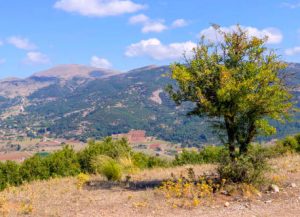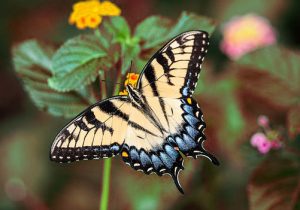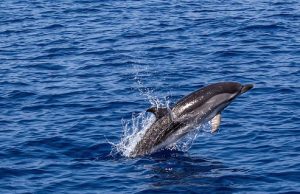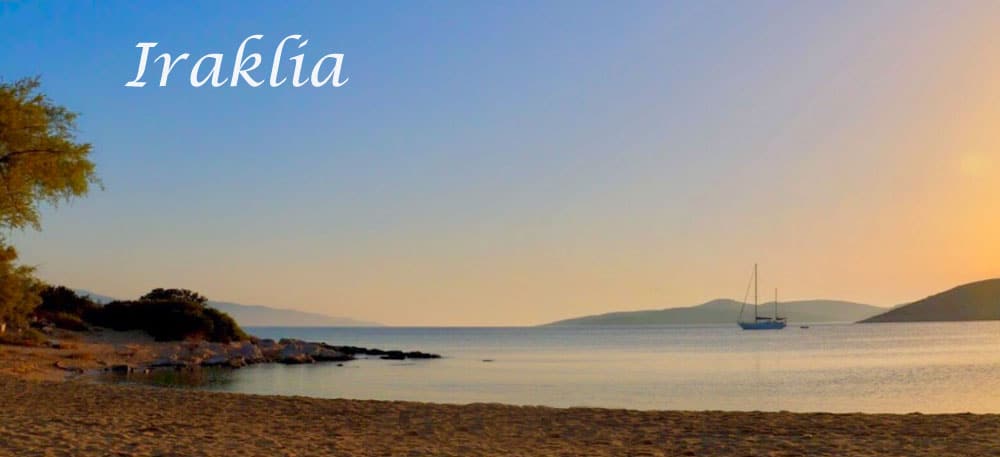Flora and fauna in Iraklia
Iraklia, although an important place for Greek nature with many endemic and rare species, has not been fully studied and its flora and fauna hides many secrets. The most complete research has been done and continues by Yiannis Gavalas in Iraklia. The research is thorough and includes all forms of life from the island’s flora and fauna to mushrooms and insects, while also extending to the rocky islands that are of special scientific interest.
Flora
 In Iraklia one encounters a huge variety of plant species, there is plenty of vegetation and spring water. In its scarce soils, among the dry stones and rocks, the walker sees a wide variety of flowers. Thus, we meet the anemone, in white and violet color, the pale daffodil, the crocus, the narcissus, the hyacinth, the daisies, the mandrakes, the protected sea lily, the poppies, the wild orchids and a multitude of other native flowers .
In Iraklia one encounters a huge variety of plant species, there is plenty of vegetation and spring water. In its scarce soils, among the dry stones and rocks, the walker sees a wide variety of flowers. Thus, we meet the anemone, in white and violet color, the pale daffodil, the crocus, the narcissus, the hyacinth, the daisies, the mandrakes, the protected sea lily, the poppies, the wild orchids and a multitude of other native flowers .
All the above plants belong to the lowland and semi-mountainous zone. Shrubs and Trees The wind-exposed slopes of Heraklia are mainly covered by brambles and bushes. There are few trees, as a result of which the island gives the impression that it is bare of vegetation. But a closer look leads to the discovery of a rare flora.
The main types of shrubs that grow in Heraklia are the sea cedar or snake, the schinos, the aspalathos, the lavender, the fumana, the thyme, the thrubi. Close to the coasts you can find tamarisk, a tree quite common in the Cyclades islands. Between the houses and the ravines one can easily distinguish the prickly pears, a type of cactus, which originates from the tropical regions of America, but easily acclimatized to the warm environment of the Cyclades
Fauna
 In Iraklia one encounters a variety of coastal ecosystems: dunes with cedar stands, sandy beaches, rocky shores and steep slopes. At the same time, there are valuable aquatic ecosystems, such as bays and inlets, reefs and sea caves. All these fragile natural spaces support distinct faunal forms. For this reason, Iraklia, together with the islets, Mikros and Megalos Avelas that belong to it, have been included in the Special Protection Areas (SPA).
In Iraklia one encounters a variety of coastal ecosystems: dunes with cedar stands, sandy beaches, rocky shores and steep slopes. At the same time, there are valuable aquatic ecosystems, such as bays and inlets, reefs and sea caves. All these fragile natural spaces support distinct faunal forms. For this reason, Iraklia, together with the islets, Mikros and Megalos Avelas that belong to it, have been included in the Special Protection Areas (SPA).
For millions of birds the Aegean islands are a stopover on their long migratory journey. Once there, they are in dire need of safe places to rest and, if possible, feed.
The passage and stop of migratory birds, such as e.g. wild geese, is a very familiar image for the residents of Heraklion as well, since the conditions here are ideal. The island’s lush landscapes attract a large number of insects. There, one comes across birds such as the black-billed warbler and the white-tailed godwit. A large number of species feed or nest in the coastal waters, such as the herring gull, the cormorant, the tern, the Artemis. Near cultivated lands or settlements one can see the tern, the wood pigeon, the owl and, during the winter, the robin.
Buzzards nest in the few trees of the island. Finally, it is worth noting that the golden eagle, the peregrine falcon and the vulture (gyps fulvus) nest on the highest points of Iraklia, while on the small islets of the island the black falcon nests. Reptiles The most common species of viper (Vipera ammodytes) is found in Iraklia. Also, in Iraklia one meets the lizards (cyrtodactylus cotschyi-podarcis erchardii-hemidactylus turcicus), which live under bushes, among the stones. In the sea, the turtle caretta caretta is sporadically found.
Marine fauna

A typical example is the seal Monachus monachus, which belongs to the endangered species, which is why it is protected on the basis of international treaties. Also, the residents and visitors of the island often find themselves in front of the impressive sight of dolphins swimming in the waters of Heraklion. This is the most well-known species of dolphin, the bottlenose dolphin (Tursiops truncatus). Occasionally the common dolphin (delphinus delphis) appears.
